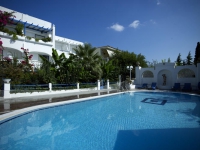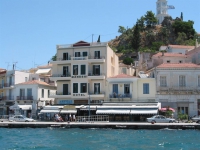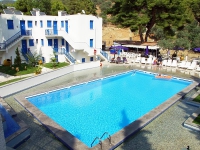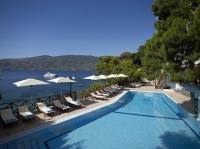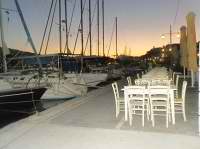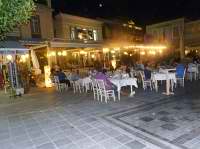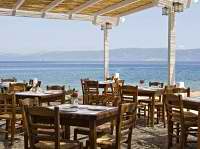The Archaeological Museum of Poros was built in 1967-68 on the site of the former home of Alexandros Koryzis (Prime Minister of Greece in 1941). There are two exhibition halls in the museum, one on the ground floor and another on the floor above it. They host exhibits from all over the Trizina region, as well as the findings of the old Philadelphus excavations in Ermioni.
The museum houses sculptures, inscriptions, and architectural fragments from Trizina (Troezen), Kalavria, and Methana. The most important exhibits are a large relief with a representation of a dog that was incorporated into an ancient building, a plaster cast of a well-known inscribed column from Trizina with the text of the Athenian resolution proposed by Themistocles in 480 BC regarding the Persian invasion, an archaic inscription (about 600 BC) from a gravestone found in Methana, an honorary resolution of the city of Trizina (369 BC), and the inscribed pedestal of a bronze statue of the Emperor of Rome, Marcus Aurelius, donated by the city of Methana (175-180 AD).
Some of the most important exhibits from the classical period are two statuettes, a naked boy and a woman with a robe and garment, a statuette of Asclepius (Asklepios) from Kalavria, and some 4th century BC gravestones from the area of the cemetery of the ancient city (including a remarkable funerary relief with an oversized representation of a woman).
From the imperial era, when a series of imposing burial monuments was constructed around the city walls, funerary markers of Trizina are exhibited, including the stele of the Kalavrian orator Xenocrates (3rd century BC).
In addition, the museum exhibits a series of column capitals, examples of the three main architectural styles from the Archaic era to Roman times: a 6th century BC Doric column capital, another Doric one from the 5th century BC, and an Ionic corner column capital from the 4th century BC, complemented by two examples of the Corinthian column capitals of the Roman period, one from Methana and the other from Trizina. The second one is decorated on two sides with embossed faces which bear witness to its origins in a theatrical edifice.
Finally, samples of Early Christian architecture, such as column capitals and decorative details of this period from the wider area of Trizina, are an important part of the exhibition.


